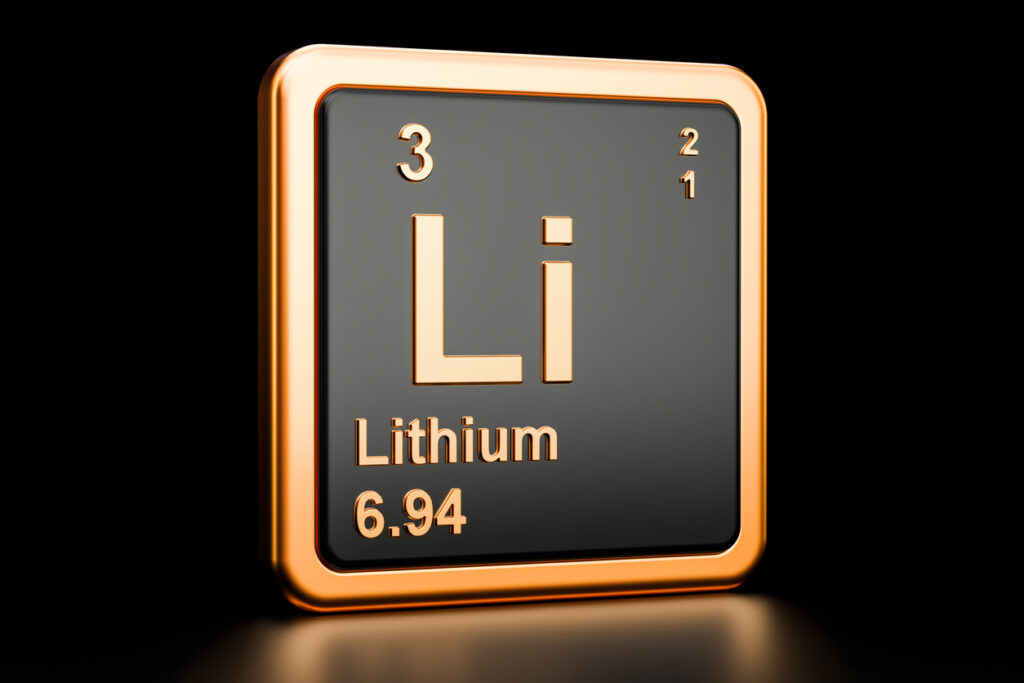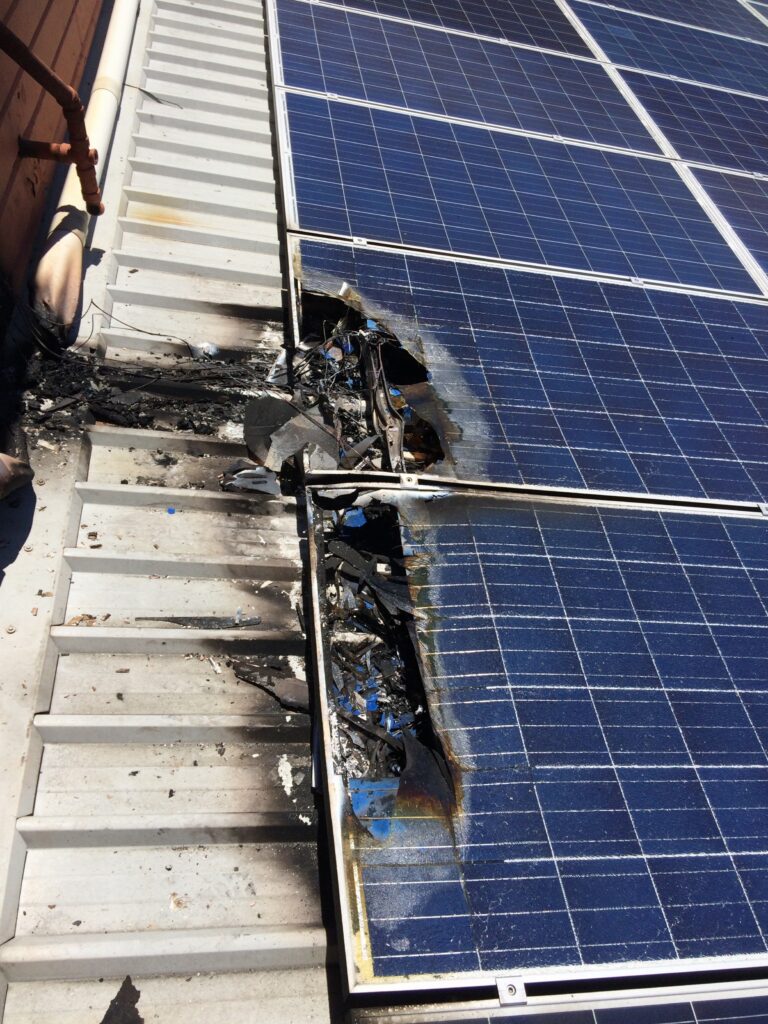Disclosure: Some of the links on this page are affiliate links. This means that, at zero cost to you, this website will earn an affiliate commission if you click through the link and finalize a purchase. This website, diysolarenergy.com, is a participant in the Amazon.com Services LLC Associates Program, an affiliate advertising program designed to provide a way for websites to earn advertising revenues by advertising and linking to Amazon.com.
How Safe is DIY Solar?
The adoption of residential solar power systems has skyrocketed in recent years, driven by falling costs and environmental incentives. However, the electrical components and lithium batteries that make up these systems can pose safety hazards if not properly installed and maintained. DIY system installers must be especially careful to observe design and installation best practices for solar systems and all safety requirements for high energy electrical systems. The best advice is – “if you don’t know – ask a solar professional for help”. Two critical safety considerations for any home solar array are the battery chemistry and risk of solar panel fires.
Lithium Batteries - Li-ion vs LiFePO4 Safety

Nearly all modern solar energy storage systems rely on rechargeable lithium batteries to store excess energy captured during the daytime for use at night. Lithium batteries offer high energy density and good cycle life, but they also come with fire risks that homeowners must consider.
The two main lithium battery types used in home solar storage are lithium-ion (Li-ion) and lithium iron phosphate (LiFePO4). Both contain flammable electrolytes, but LiFePO4 batteries are inherently less prone to fire and thermal runaway issues. This is because iron phosphate cathodes are more thermally and chemically stable than the cobalt oxide cathodes used in lithium-ion batteries.
Li-ion batteries have been involved in several high-profile fires in electric vehicles and consumer devices. The most dangerous failure mode is thermal runaway, where a fault causes uncontrolled heating that ignites the flammable electrolyte. Once triggered, thermal runaway can lead to cell rupture or even detonation. Li-ion battery chemistry can also be self-fueling since the reaction can supply its own oxygen making it difficult to extinguish a Li-ion fire.
By contrast, LiFePO4 batteries are engineered to resist thermal runaway at the chemical level. If individual cells start to overheat, the exothermic reactions inside the battery can be stopped before igniting other cells. Note that puncturing or shorting LiFePO4 batteries still can result in hazardous situations or fires.
On a materials level, LiFePO4 cathode chemistry demonstrates enhanced thermal and structural stability compared to other lithium battery cathode materials. The strong phosphate-oxygen bond resists decomposition at elevated temperatures. These properties minimize the risk of thermal runaway failures that can occur in other lithium-ion batteries.
However, LiFePO4 batteries still contain flammable organic electrolytes and have innate short-circuit risks from electrode damage or manufacturing defects. Internal short-circuits can ignite the electrolyte and trigger dangerous fires or explosions. External factors like overcharging, physical damage, high temperatures, or improper handling may also overwhelm the safeguards.
While LiFePO4 technology has demonstrated excellent safety performance under normal conditions, it is not an absolute guarantee against catastrophic battery failure. Much depends on the quality of materials selection, cell engineering, manufacturing consistency, and battery management systems. Caution and responsible operating protocols are still essential for minimizing fire hazards.
For home installations, LiFePO4 batteries offer a higher safety margin and reduced fire risk compared to traditional lithium-ion. However, no lithium battery is completely risk-free. Proper installation by certified professionals is essential, including appropriate ventilation, temperature controls, and fusing. Battery storage banks should not be installed in a living area if this can be avoided. Homeowners should also be aware of best practices for charging, storage, and maintenance to prevent battery failure over time.
In summary, LiFePO4 batteries offer clear safety advantages but are not completely immune to explosive hazards during misuse or malfunction.
What Causes Solar Panel Fires?

In addition to stored energy, fire risks can also arise from the solar panels themselves. Most concerning are certified reports of roof fires ignited by electrical faults within solar panels.
Solar panels are designed to be intrinsically safe through robust internal fusing, isolation switches, and insulation. However, in rare cases manufacturing defects or external damage can lead to electrical arcing, overheating, and fire. Warning signs include smoking, burnt odors, and discovering loose wiring or cracked panels upon inspection.
Industry groups note that solar-related fires remain extremely rare events given the total number of installed panels. For example, one study found an estimated fire incidence rate of just 2.44 per 100,000 solar systems annually. Nevertheless, the fact that PV systems are installed on homes means that firefighters and homeowners should be aware of the potential dangers.
There are several factors that can influence the fire risk posed by rooftop solar arrays:
- Panel Flushing – Panels mounted parallel to and touching the roof surface, known as “flush mounting,” can exacerbate fires by not allowing heat or smoke to escape.
- DC Isolation – Lack of properly rated DC disconnect switches can make isolating faults difficult for firefighters.
- Panel Access – Inability to walk safely on the roof around panels hinders ventilation and suppression.
- Rapid Shutdown – Newer NEC requirements for “rapid shutdown” allow solar panels to be isolated remotely, improving firefighter safety.
To mitigate dangers, solar PV systems should only be installed by qualified professionals following all applicable safety codes. Panels should be mounted above the roof with adequate ventilation underneath. Proper roof access paths, signage, and rapid shutdown capabilities are also critical for emergency responder safety.
Potential Electrical Issues
Energy storage system batteries can provide very large currents due to low internal resistance and this can create other fire hazards if the system design does not meet proper electrical safety standards like wire size, fuses and circuit breakers.
Sometimes DIY installers may be tempted to use smaller gauge wire than required by electrical safety codes and best practices. This is a dangerous practice – for example you may think that since you are using a smaller load you don’t need to size the battery wire as recommended. However, a short in your inverter or solar charge controller could draw very high current from the batteries, which would overheat your wiring and start a fire.
Another area that most DIY installers do not consider is that the solar panels are high current devices. That means they will provide the rated short circuit current a significant time, and underrated wiring can melt in this condition.
This means that any solar power system should be designed and installed to meet all applicable electrical safety standards and regulations to insure proper operation.
Electrical DC Arc Faults

An arc fault occurs when electricity jumps across an air gap between two conducting surfaces, rather than following its intended path through a wire. While air normally acts as an electrical insulator, a high voltage difference between adjacent conductors can ionize the air molecules, allowing current to flow through the plasma discharge. Series solar panel strings can produce this high voltage.
The extreme temperatures inside an arcing fault, which can readily exceed several thousand degrees Celsius, are sufficient to melt glass, copper, aluminum, and other materials found in photovoltaic systems. This intense localized heat can also ignite surrounding combustible materials, posing a fire hazard.
In photovoltaic solar arrays, direct current (DC) arc faults may form across the DC cabling and components. The lower voltage DC current follows different fault dynamics compared to high voltage AC arcs. However, DC arc faults on residential PV systems can still reach thousands of degrees and require rapid detection and extinguishing to prevent hazards.
Many solar system designs use series panel configurations which can generate high DC voltages – up to 500 VDC or more. Any voltage over 80 volts DC can produce an arc. This high voltage, plus the high current capability of these panels can create problems with some circuit breakers that cannot handle the arc created when trying to disconnect the panels. Using the incorrect “solar panel isolator” switch can cause an immediate meltdown and fire.
Various warning signs like melted wiring insulation, charred circuit boards, or glowing plasma discharges indicate DC arcing may be occurring. Proper system design, installation, and maintenance to avoid dirt, moisture, corrosion, and loose connections can mitigate the chances of arc faults forming. Advanced arc fault circuit interrupters tailored to DC solar arrays can also detect arcing and quickly cut off power to stop it. With vigilant engineering and precaution, the risks of dangerous DC arc faults on photovoltaic systems can be minimized.
Weighing Risk vs. Reward
Like any home improvement project, installing solar energy systems requires carefully evaluating the benefits and potential drawbacks. Homeowners must balance the rewards of solar – such as energy cost savings and environmental benefits – with the realities of lithium battery fire risks and emerging solar panel safety hazards.
DIY solar energy systems in particular should be carefully designed with reliable, certified components and should be installed to government and industry standards. Cutting corners and poor installation practices can be a recipe for disaster.
Use correct cable sizes for rated load plus safety margin, use correct fuses and circuit breakers, and insure all crimps are done properly and terminals are tightened to the recommended torque. Loose connections create high resistance that could overheat and start a fire. Check with thermal camera regularly for hotspots.
Fortunately, much is being done to reduce solar-related fire dangers through safety innovations, advanced battery chemistries, and proper installation. With appropriate safety measures in place, residential solar power can provide clean, renewable energy and effective home energy storage with minimal risks. As solar adoption grows, continuing research and advocacy around fire safety for both solar panels and all types of lithium batteries will remain paramount.
Amazon and the Amazon logo are trademarks of Amazon.com, Inc, or its affiliates. CERTAIN CONTENT THAT APPEARS ON THIS SITE COMES FROM AMAZON. THIS CONTENT IS PROVIDED ‘AS IS’ AND IS SUBJECT TO CHANGE OR REMOVAL AT ANY TIME.
Related Posts
- Beginner's Guide to DIY Solar Energy
Going Solar: A Beginner's Guide to DIY Solar Energy With climate change and rising energy…
- Should I Buy a DIY Solar Power Kit or Separate Components?
Going Off-Grid with DIY Solar PowerInterest in solar power continues to grow as more people…
- Solar Panel Guide
Understanding Solar Panels: A Comprehensive Guide for New DIY UsersWith the increasing push for sustainable…

